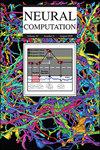知识是对遍历性的突破。
IF 2.1
4区 计算机科学
Q3 COMPUTER SCIENCE, ARTIFICIAL INTELLIGENCE
引用次数: 0
摘要
我们构造了一个热力学势,它可以指导在一组二元自由度上定义的生成模型的训练。我们认为,在简化描述后,为了使生成模型在计算上可管理,潜力发展为多个极小值。这反映在生成模型本身的自由能属性中出现多个极小值。使用$N$二元自由度的训练样本的种类通常远低于完整相空间的2$^{N}$的大小。我们认为,非表征构型应该被认为是包含一个高温相,与组成训练集的构型之间有一个广泛的能量缺口。因此,训练相当于以不同界态库的形式对自由能面进行采样,其中每一个都打破了遍历性。遍历性断裂防止逸出到包含高温相的近连续态;因此,它对于适当的功能是必要的。然而,它可能具有限制访问训练集中未充分表示的模式的副作用。同时,图书馆内部的遍历性断裂给学习和检索带来了复杂性。作为补救措施,可以同时使用多个生成模型-每个自由能最小值最多使用一个模型。本文章由计算机程序翻译,如有差异,请以英文原文为准。
Knowledge as a Breaking of Ergodicity
We construct a thermodynamic potential that can guide training of a generative model defined on a set of binary degrees of freedom. We argue that upon reduction in description, so as to make the generative model computationally manageable, the potential develops multiple minima. This is mirrored by the emergence of multiple minima in the free energy proper of the generative model itself. The variety of training samples that employ N binary degrees of freedom is ordinarily much lower than the size 2N of the full phase space. The nonrepresented configurations, we argue, should be thought of as comprising a high-temperature phase separated by an extensive energy gap from the configurations composing the training set. Thus, training amounts to sampling a free energy surface in the form of a library of distinct bound states, each of which breaks ergodicity. The ergodicity breaking prevents escape into the near continuum of states comprising the high-temperature phase; thus, it is necessary for proper functionality. It may, however, have the side effect of limiting access to patterns that were underrepresented in the training set. At the same time, the ergodicity breaking within the library complicates both learning and retrieval. As a remedy, one may concurrently employ multiple generative models—up to one model per free energy minimum.
求助全文
通过发布文献求助,成功后即可免费获取论文全文。
去求助
来源期刊

Neural Computation
工程技术-计算机:人工智能
CiteScore
6.30
自引率
3.40%
发文量
83
审稿时长
3.0 months
期刊介绍:
Neural Computation is uniquely positioned at the crossroads between neuroscience and TMCS and welcomes the submission of original papers from all areas of TMCS, including: Advanced experimental design; Analysis of chemical sensor data; Connectomic reconstructions; Analysis of multielectrode and optical recordings; Genetic data for cell identity; Analysis of behavioral data; Multiscale models; Analysis of molecular mechanisms; Neuroinformatics; Analysis of brain imaging data; Neuromorphic engineering; Principles of neural coding, computation, circuit dynamics, and plasticity; Theories of brain function.
 求助内容:
求助内容: 应助结果提醒方式:
应助结果提醒方式:


